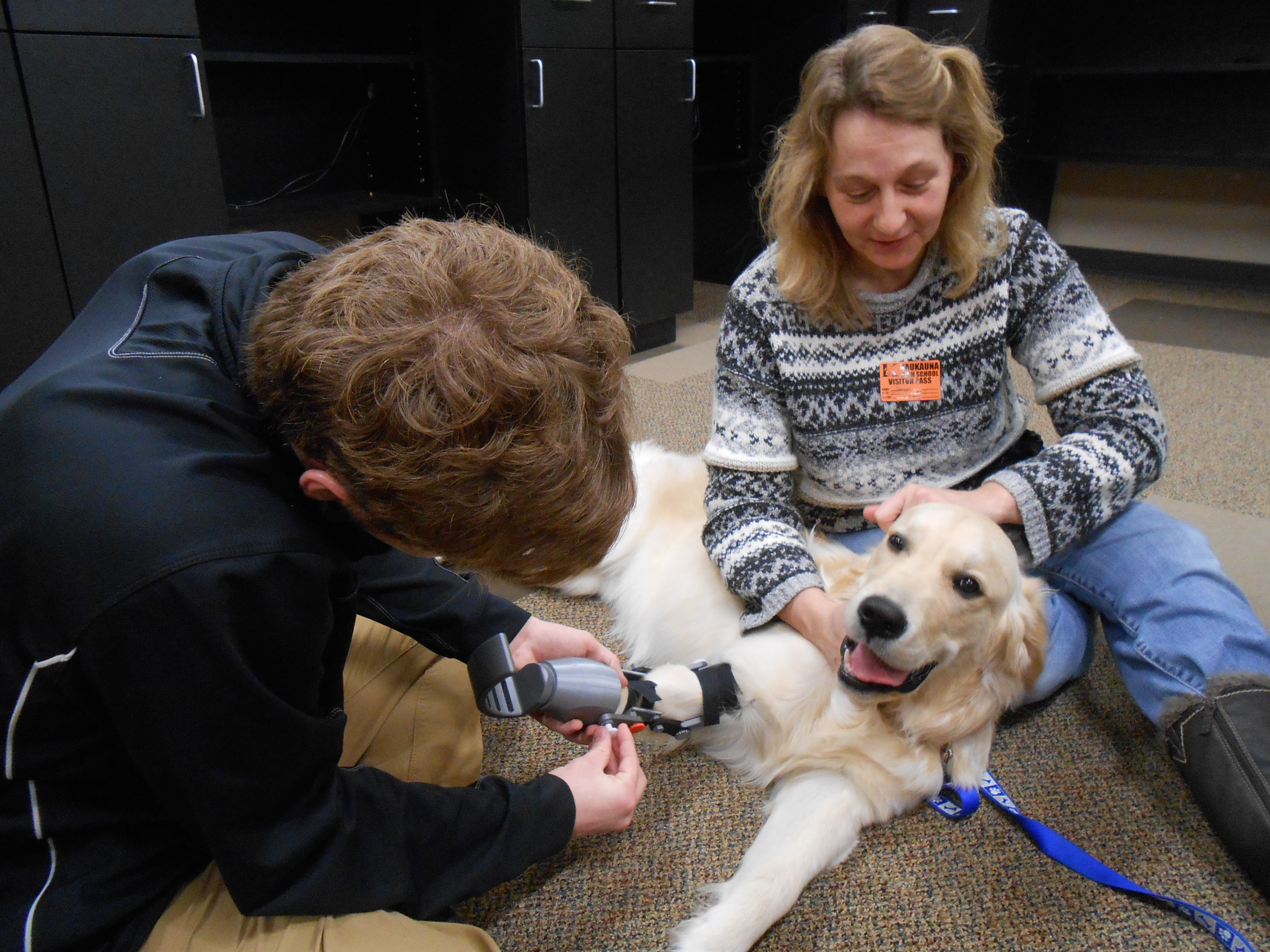How It’s Done—3D Printing, Puppy Paws to Jet Engines
Using 3D printing to foster STEM skills and design creativity

Whether constructing a 3D printer from a kit or letting students’ imaginations fly (and then expecting them to ground those wild ideas through engineering skills), one grant-savvy Wisconsin Tech Teacher credits his bounty of talented young tech minds to one idea: “If you build it, they will come.”
Who: Nels Lawrence, Technology & Engineering Youth Apprenticeship/CO-OP Coordinator
Where: Kaukauna High School, WI—2019 National Award Winner for Manufacturing Career Pathways
What: Using 3D Printers for puppy prosthetics and other engineering challenges
I first read about 3D printers online in 2009, and called a guy named Bre Pettis to ask if I could buy a kit (I did not know that at the time the Makerbot company was probably running out of his apartment in NYC— later sold for millions). I got a pile of parts back, no instructions. Challenge one. Bre put some info online and we built the printer. Challenge two was how to use it. Lucky for me I had two future computer tech pros as students in my class who mastered the Linux software and we started printing.
Today, we have three printers in the Fab Lab attached to the library, several at the middle school, and eight more outside my door. I learned quickly I wasn’t going to get anywhere without money, so I started writing grants (earning from $500 to $200,000), and supply my students outside the school budget.
Between offering great materials and college credit through the local community college and the University of Wisconsin Oshkosh, the program started attracting the top talented and very gifted students. In fact, one passed me walking down the hall today holding a jet engine he had built first in plastic on the 3D printer, a second following that in metal. (I asked, he was on his way to an interview with MIT.)
Tools and ideas to transform education. Sign up below.
The school allowed me to run classes with small numbers and it was in one of these engineering classes where the puppy paw prosthetic was designed. I already had a unit where students design and document some sort of assistive device for humans, so when I heard about this golden retriever puppy who was missing part of his front leg, it made sense. I mentioned it to my student, Ben Brochtrup—now an aerospace engineer major at UMN—who got excited and started designing.
Positive Results
The main value of offering tech like the 3D printer is drawing out design creativity. Students had to push themselves to learn the drawing skills to do an original project rather than going to the web and printing a ready-made file.
Biggest Challenge
The puppy project involved many versions. We worked through troubleshooting and redesigns half a dozen times. We had five different types of printers as well as a new liquid process one. When trying the first model on the puppy with velcro, we realized cracking could be an issue. We experimented with plastic infused with metals, carbon fibre and then did more tests using a Vernier Structures & Materials Tester. We decided to use wood fibre-infused plastic to offer flexibility during stress and movement.
Meanwhile the puppy was growing, so Ben also created a screw-in attachment so the bottom portion could be switched out and expanded for length.

Finding Funding
Grant money is out there. Look for your state resources; many offer big value grants in tech. Don’t discount smaller independent grants. They all add up.
Pro Tips
I suggest educators look for a way to use the printer as a tool, not just a way to download cute stuff to print. Students need to have some design skills and then apply engineering brainstorming and development looping to actually learn with this tool. Create lesson plans in engineering. Let the students design something that could actually work—that's the exciting part about engineering.
Tech Tools
Creative Programs:
Solidworks
Inventor
Blender
Slice program—Simplify 3D
College credit courses teach all of the major 3D design systems
Sascha has nearly two decades of experience as a freelance journalist writing for national magazines, including The Washington Post, LA Times, Christian Science Monitor, National Geographic Traveler, and others. She writes about education, travel and culinary topics.

